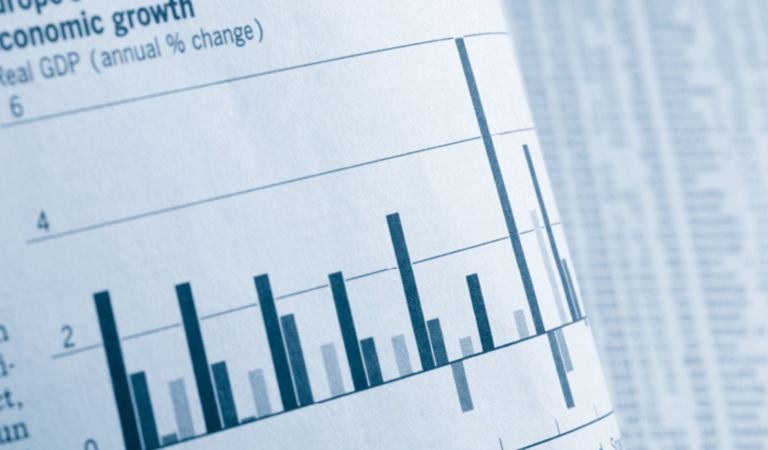Equities
Global equities (+8.1%) rose in November, ending the month with a 17.4% gain year to date. Stocks rallied in tandem with government bonds, registering their best monthly performance in three years as falling inflation in developed markets and weakening economic data across the globe bolstered views that policy rates have peaked and could begin to decline in 2024. However, economic growth and inflation remained uneven across countries and regions, and the US Federal Reserve (Fed) and the European Central Bank (ECB) pushed back on interest-rate cuts until inflation is sustainably closer to target. The Bank of Japan (BOJ) continued to maintain its ultra-loose monetary policy, although broadening and accelerating inflation increases the pressure on the central bank to dial back its massive monetary stimulus. In addition to a deepening crisis in the property market, China’s manufacturing activity in November contracted for the second straight month and the services sector expanded at the slowest pace this year as the country’s recovery remained fragile. Commodity prices declined from their October highs. The Brent crude oil price dropped to US$80 per barrel, even with the Middle East conflict, amid more US output and as OPEC+ countries struggled to agree on production cuts.
US
US equities (+9.1%) snapped a three-month losing streak as the S&P 500 Index registered its largest monthly gain since July 2022. The broad-based rally in equities was accompanied by dramatically easing financial conditions; longer-dated US Treasury yields fell sharply from their October peaks after moderating economic activity, receding inflation, and a softening labor market reinforced the view that the Fed has reached the end of its prolonged cycle of interest-rate hikes. Despite elevated recession risks and considerable uncertainty about the economic outlook for 2024, the surge in equities suggests higher confidence that the US economy can achieve a “soft landing.” Notably, the CBOE Volatility Index, or VIX, dropped sharply to its lowest level since the pandemic, indicating a low degree of expected volatility and “fear” in the stock market. Investors’ policy-rate expectations shifted markedly, with fed funds futures showing that markets anticipate roughly 100 basis points (bps) of interest-rate cuts in 2024. Waning core personal consumption expenditures inflation and personal income, in addition to weakening labor market and consumer spending indicators in October, were consistent with expectations that the economy will moderate in the fourth quarter and gave the Fed more confidence that interest rates are sufficiently curbing economic activity and inflation. Of the 99% of companies in the S&P 500 Index that had reported third-quarter earnings, the blended year-over-year earnings growth for the index was 4.8%, notably better than estimates of a 0.3% decline. The forward 12-month price-to-earnings ratio stood at 18.7.
Economic data released during the month signaled softening momentum in the US economy, highlighted by a broadly cooling labor market. In October, the unemployment rate rose to a nearly two-year high of 3.9%, and job growth was slower than expected as headline nonfarm payrolls increased by 150,000 following downward revisions to job gains in the prior two months. Continuing jobless claims trended higher, reaching almost a two-year high of 1.9 million in November. Consumer spending moderated but remained resilient in October; retail sales dipped 0.1% from the prior month, while consumer spending rose only 0.2% after a sizable 0.7% gain in September, as high interest rates and prices, ebbing income growth, dwindling pandemic savings, and the resumption of student-loan payments tempered purchasing. The Conference Board’s Consumer Confidence Index rose to 102 in November — the first gain in four months — with households less optimistic about current conditions but more positive about their buying plans and future expectations, including their anticipated financial situations. Despite an unexpected pickup in new-home construction amid limited inventory, decades-high mortgage rates and elevated prices continued to weigh on the housing market. In October, new- and existing-home sales declined, while pending sales of previously owned homes slid to their lowest level on record.
The manufacturing sector contracted for the thirteenth consecutive month as the Institute of Supply Management (ISM) Manufacturing Index held at 46.7 in November. The reading was below expectations but suggested that activity may be stabilizing at a weak level. Company commentary was generally downbeat. Although the demand for services continued to hold up, the services sector expanded at its slowest pace in five months and below market consensus; the ISM Services Index slipped 1.8 points to 51.8, with employers reducing hiring and business activity softening. The National Federation of Independent Businesses Small Business Optimism Index eased to a five-month low, reflecting lower earnings amid deteriorating sales and elevated costs.
Ten of the 11 sectors in the S&P 500 Index (+9.1%) posted positive results. Information technology (+12.9%) was the best-performing sector, driven by semiconductors & semiconductor equipment (+15.3%) and software (+13.5%). Real estate (+12.5%) also outperformed during the period. Financials (+10.9%) rose, led by banks (+14.7%) and capital markets (+14.3%). Consumer discretionary (+10.9%) also outperformed, driven higher by automobiles (+18.2%) and broadline retail (+9.8%). Energy (-1.0%) was the worst-performing sector during the period.
Europe
European equities (+5.8%) rebounded in November. The European Commission (EC) downgraded its 2023 eurozone economic growth forecast for the second time this year, to 0.6% — 0.2% lower than its September forecast — due to the impact of elevated inflation, a steep increase in interest rates, and a slowdown in global trade. The HCOB Flash Eurozone Composite Purchasing Managers’ Index (PMI) continued to fall in November amid a further decline in new orders, although the slower rate of contraction in the index tentatively signaled stabilization in the region’s economy. Furthermore, waning demand and muted confidence in the economic outlook led to the first decline in employment since the start of 2021. Against a backdrop of ebbing inflation and weak economic growth, the central banks of Norway, Sweden, and the UK left interest rates unchanged. Driven by falling energy prices and smaller increases in food and services prices, preliminary eurozone headline inflation dropped much more than expected, to 2.4% in November from 2.9% in October, marking the slowest annual pace of price increases since July 2021. Core inflation slid to 3.6%, from 4.2%. Third-quarter earnings for companies in the STOXX 600 Index are forecast to decline by 11.4% from a year earlier.
Europe’s manufacturing sector suffered another steep downturn in November; the HCOB Eurozone Manufacturing PMI registered 44.2, a modest improvement from 43.1 in October. Contractions in output, new orders, purchasing activity, and inventories slowed, while employment losses accelerated by the most since August 2020. Encouragingly, business confidence edged up to a three-month high, and input costs and output prices continued to fall. The HCOB Flash Eurozone Composite PMI showed that services sector activity declined for the fourth successive month but at a slower pace. Services input costs, including wages, rose for the fourth straight month, and output price inflation intensified to a three-month high. The EC’s Economic Sentiment Indicator improved mildly to 93.8 in November; consumer confidence edged up, while industry confidence was broadly stable.
Germany’s (+9.8%) budget crisis intensified after a constitutional court ruling left a €60 billion shortfall in the government’s budget, crimping its spending plans for 2024. The ZEW Indicator of Economic Sentiment significantly increased in November, suggesting that the economy may have reached a turning point amid optimistic outlooks for economic growth and the industrial sector. In the UK (+2.3%), a surprisingly strong rise in the S&P Global/CIPS Flash Composite PMI to 50.1 in November, from 48.7, indicated that business activity expanded for the first time since July, a sign that the UK economy may have avoided a mild recession. Headline inflation plummeted to 4.6%, from 6.7% in September, while core inflation dropped to 5.7%. In the Netherlands (+10.0%), a surprising victory by far-right Freedom Party leader Geert Wilders in national elections sent shockwaves through Dutch and European politics, setting the stage for a lengthy period of uncertainty around the formation of a coalition government and unity within the European bloc.
Pacific Basin
Pacific Basin equities (+5.1%) ended the month higher. In Australia (+4.9%), the Reserve Bank of Australia (RBA) raised interest rates to a 12-year high of 4.35%, as expected, amid persistent services inflation, record-high housing prices, and historically low unemployment. The bank also noted a higher hurdle for further policy tightening, signaling that this may be the end of its rate-hiking cycle. Subsequently, the release of the Consumer Price Index showed that core inflation cooled more than expected, to 4.9% in October, increasing the likelihood that the RBA will leave interest rates unchanged in December. Other economic data suggested that the economy is slowing; retail sales fell more than expected in October despite a surge in the country’s population, and consumer confidence fell in November after the interest-rate increase heaped additional pressure on the country’s heavily indebted households. In contrast, firms reported an improved business environment, even as they expressed concerns over the economic outlook. The number of jobs in October rose by 55,000, more than double expectations. However, the unemployment rate continued to trend higher, while reduced job postings suggested that the demand for labor is softening. Former Bank of England official Andrew Hauser was named as the new deputy governor of the RBA, the first foreigner to hold the position and the latest development in the recent shake-up at the bank.
In Japan (+6.0%), a key inflation measure accelerated for the first time in four months, in line with expectations; the core Consumer Price Index rose 2.9% year over year in October, up from 2.8% in September and well above the BOJ’s 2% target for the nineteenth straight month. Stubborn inflation put more pressure on the BOJ to scale back its ultra-loose monetary policy against a backdrop of weaker economic growth. Japan’s economy contracted at the fastest pace in two years as third-quarter GDP shrank at a 2.1% annualized pace, far worse than forecasts, amid lower business investment, sluggish consumer spending, and higher imports. The yen weakened against the US dollar following the release. Other economic data was mixed but underscored the fragility of the economy. Retail sales dropped 1.6% in the third quarter, and in October, exports exceeded expectations, but grew at a sharply slower pace, and industrial production rose 1%, more than expected. In response to shrinking real wages and lackluster household spending, the government unveiled a ¥17 trillion (US$112 billion) economic stimulus package to boost consumption and cushion the impact of inflation.
In New Zealand (+8.1%), the Reserve Bank of New Zealand (RBNZ) held interest rates at 5.5%, as expected, but noted that policy could be tightened if price pressures do not ease. RBNZ Governor Adrian Orr stated that policymakers are concerned that inflation won’t ease fast enough amid rapid population growth, and there are no plans to cut interest rates anytime soon. Unemployment unexpectedly climbed to the highest level in two years, reaching 3.9% in the third quarter, up from 3.6% in the second quarter. The country’s new government indicated that it would start the legislative process to return the RBNZ to a single inflation-targeting mandate, which would remove the requirement to consider employment when setting policy rates.
Emerging Markets
Emerging markets (EM) equities (+6.2%) advanced, with Latin America the best-performing region, followed by Europe, the Middle East, and Africa (EMEA) and Asia.
Latin America (+11.1%) generated outsized gains. In Mexico (+11.3%), third-quarter GDP was revised higher, expanding 1.1% from the previous quarter and above estimates, leading Deputy Finance Minister Gabrial Yorio González to lift the country’s 2023 economic growth forecast. Favorable government spending on transportation and urbanization projects, strong exports to the US, and record-high remittances from migrant workers in the US helped to drive growth. Brazil’s (+11.8%) policy rates were lowered by 50 bps to 12.25%, as anticipated. Annual inflation in October fell more than expected, to 4.8%, keeping the central bank on track for another rate cut of the same magnitude in December. The central banks of Chile (+7.1%) and Peru (+3.2%) reduced interest rates for a third straight month.
EMEA (+6.1%) equities rose. South Africa’s (+8.9%) central bank held rates steady at 8.25% for the third consecutive time, with the bank expressing concern about the upside risks to prices after inflation rose 5.9% year over year in October (still within the bank’s 3% – 6% target). In an effort to boost prices, Saudi Arabia (+4.8%) extended voluntary oil supply cuts through March 2024 amid looming concerns about economic growth next year and expectations of a supply surplus. In the United Arab Emirates (+6.3%), GDP grew 3.7% in the first half of the year, with non-oil-sector growth surging 5.9% and vastly outperforming overall growth. Turkey’s (+10.0%) central bank raised interest rates to 40% to tackle rampant inflation of 61% year over year in October. Higher household consumption and investment boosted third-quarter GDP by 5.9% year over year, well above the 3.9% gain in the previous quarter.
In Asia (+5.7%), South Korea (+11.0%) and Taiwan (+9.0%) advanced as the two tech-exporting nations benefited from strong inflows from foreign investors. South Korea’s factory output unexpectedly fell by the most in 10 months on weaker chip production. India’s (+6.9%) central bank held interest rates steady at 4%, maintaining its accommodative stance. China (+1.9%) significantly underperformed as the economy struggled to mount a sustained recovery, underscored by mixed economic data and further weakness in the property sector. China’s central bank governor expects the economy to achieve the government’s 5% economic growth target and indicated that financial risks in the property sector are manageable. Nevertheless, new-home prices fell at a faster pace in October, and property investment declined sharply. The official manufacturing PMI in November remained in contraction for the second straight month, while the services sector expanded at the slowest pace this year. Industrial profit growth slowed sharply, to 2.7% in October, following two consecutive months of double-digit growth, heightening calls for increased government support.
Fixed Income
Moderating inflation and weaker global macroeconomic data reinforced expectations that policy rates have peaked, spurring a sharp drop in sovereign bond yields. Most fixed income sectors generated positive total returns and outperformed duration-equivalent government bonds on an excess-return basis.
US economic releases were mixed, underscored by a slowing labor market amid increased jobless claims. Personal income and spending posted lackluster growth as excess savings depleted, and a big spike in credit card balances in the third quarter heightened consumer’s debt burden. The ISM Manufacturing Index was flat and remained in contractionary territory as factory employment declined amid slower hiring and increased layoffs. Existing- and new-home sales declined as prospective buyers continued to face low inventory, elevated prices, and higher mortgage rates. Eurozone GDP declined moderately in the third quarter, the unemployment rate ticked higher, and annual inflation rose below consensus estimates. Germany’s ZEW Indicator of Economic Sentiment showed that investor expectations improved for the fourth straight month. Third-quarter economic growth in the UK was flat, and year-over-year headline and core inflation fell. China’s manufacturing and services PMIs declined, while the trade balance shrank as a sharp drop in exports more than offset the surge in imports from the eurozone and Southeast Asia. Japanese exports advanced and imports fell, propelled in part by a weaker yen. Canada’s unemployment rate rose.
Most major central banks left their policy rates unchanged. The Fed held interest rates steady but remained open to future rate hikes. The Bank of England maintained interest rates at a 15-year high, indicating that monetary policy was likely to stay restrictive for an extended period. The RBNZ left its cash rate steady but warned that inflation remained too high. The RBA raised interest rates for the first time since June in response to persistent inflation.
Global sovereign bond yields declined notably in most developed markets on further signs of cooling inflation and a higher probability of rate cuts in 2024, resulting in the strongest monthly gain for global bond markets since the 1980s. Ten-year and two-year US Treasury yields fell to multi-month lows. In Europe, bond yields declined as disinflation gained momentum across the eurozone. Germany’s 10-year bund yield touched its lowest level in four months. Ten-year Japanese government bond yields dropped to nearly three-month lows, tracking declines in US bond yields after dovish comments from Fed officials. In EM, select central banks (Brazil, Chile, Poland) lowered interest rates. The People’s Bank of China kept lending rates unchanged as a weaker yuan continued to limit further monetary easing while policymakers assessed the effects of previous stimulus on credit demand. The Bloomberg TIPS Index delivered a 2.71% total return, and the 10-year breakeven inflation rate decreased by 17 bps, to 2.25%, during the month.
Global credit bonds outperformed duration-equivalent government bonds as spreads narrowed. Within the securitized sectors, agency mortgage-backed securities, commercial mortgage-backed securities, and asset-backed securities outperformed duration-equivalent government bonds. Within EM, local markets debt (+5.27%) underperformed external debt (+5.66%), in US-dollar terms. Spread tightening contributed positively to external debt performance, and a decline in US Treasury yields also benefited results. Appreciation in EM currencies drove the positive performance within local markets, and movement in EM rates also helped results.
Currencies
The US dollar depreciated versus most major currencies — the weakest monthly performance for the dollar in one year — driven by dovish Fed remarks, views that interest rates have peaked, and positive equity market sentiment. Among the G10 countries, risk-sensitive currencies such as the Swedish krona, the New Zealand dollar, and the Australian dollar led the gains as markets priced sooner-than-expected interest-rate cuts in the US and Europe. The Japanese yen rose on improving labor market conditions and firmer beliefs that the BOJ will pivot from negative rates in the near term. In EM, most APAC and Latin American currencies appreciated versus the US dollar. The Mexican peso benefited from its interest-rate differential and an upward revision to Mexico’s economic growth forecast. The Turkish lira fell to a record low against the dollar following a larger-than-expected rate hike by the Turkish central bank. The South African rand declined on weaker economic data and rising inflation.
Commodities
Commodities (-3.6%) declined in November. Precious metals and industrial metals generated positive returns, while energy and agriculture & livestock registered negative results. Energy (-5.9%) declined sharply. Gasoline (-0.5%), heating oil (-3.1%), crude oil (-5.0%), and gas oil (-5.8%) fell as the American Petroleum Institute reported that US crude and gasoline stockpiles grew by about 1.3 million barrels and 195,000 barrels, respectively. US natural gas (-27.6%) continued to decline as forecasts for higher temperatures cast doubts on a pickup in weather-related demand. Domestic inventories are still about 5.5% ahead of the seasonal five-year average, providing an additional buffer alongside milder weather forecasts.
Industrial metals (+0.6%) ended modestly higher. Copper (+4.5%), zinc (+2.3%), and lead (+2.3%) advanced as China pledged to issue more sovereign debt, with the funds partially earmarked for construction and low-cost financing for affordable housing. Additionally, China’s commercial lenders held their benchmark lending rates steady, in line with an earlier central bank decision to favor other types of stimuli. Furthermore, industrial activity in Australia could potentially buoy prices in the event of supply disruptions. Aluminum (-2.9%) and nickel (-8.1%) finished lower, with every major market on the London Metal Exchange showing signs of ample supply as slowing economic growth undercut demand.
Precious metals (+3.3%) were buoyed by gains in silver (+10.7%) and gold (+2.6%), which rose after lower US inflation and weaker US economic data, particularly for the labor market, led markets to anticipate Fed rate cuts in 2024.
Agriculture & livestock (-1.3%) slid lower. Coffee (+13.2%) rallied as the Intercontinental Exchange (ICE) announced a new rule that bans the resubmission of old coffee inventories, a loophole used by some sellers to dodge penalties. The rule was expected to put further pressure on ICE-monitored coffee inventories and provide support for prices. Excessive heat in Brazil also pushed coffee prices higher. Cocoa (+12.0%) and wheat (+2.7%) rose as extreme rainfall across the growing regions in West Africa and southeastern Australia caused significant crop damage. Sweltering heat in South America helped to drive soybeans (+2.9%) higher. Rising supply and slowing demand weighed on corn (-1.8%), sugar (-3.5%), and cotton (-4.2%), while weak consumer demand pressured lean hogs (-4.5%). Live cattle (-6.0%) and feeder cattle (-6.9%) fell after the Agricultural Supply and Demand Estimates report showed larger-than-expected beef production estimates for 2024.






























Monthly Market Review — October 2025
Continue readingBy